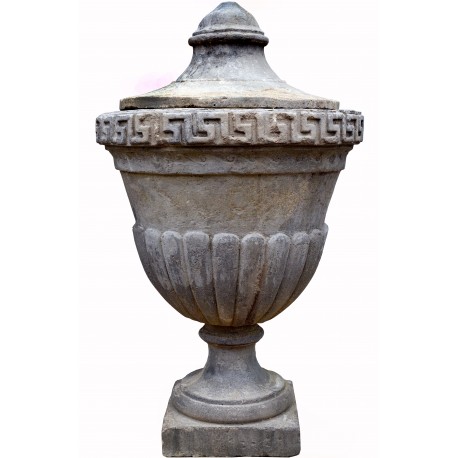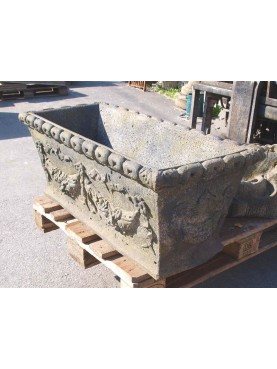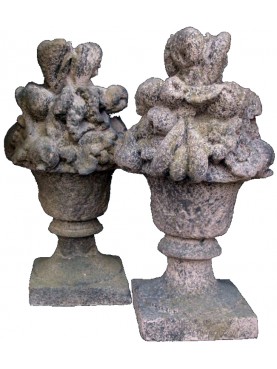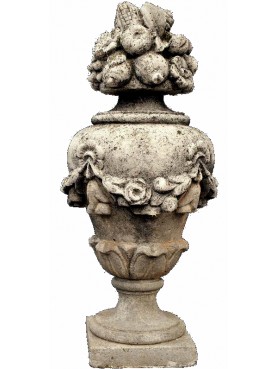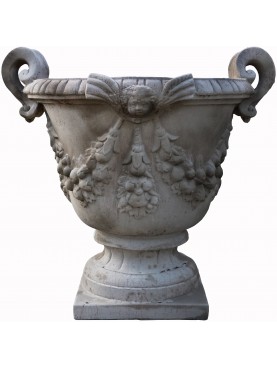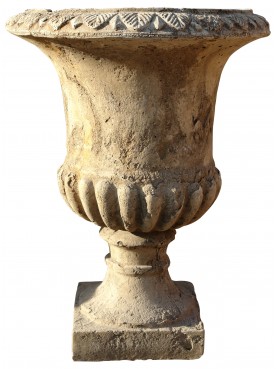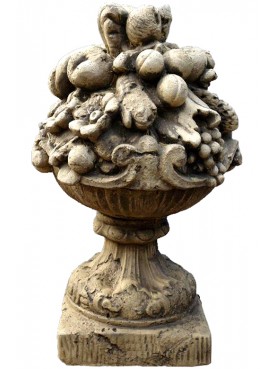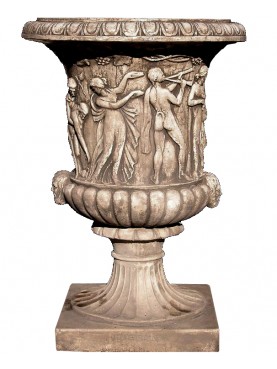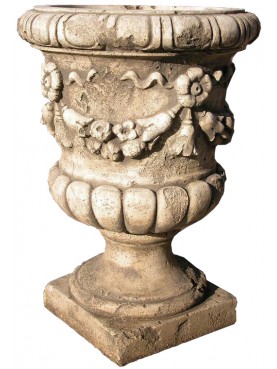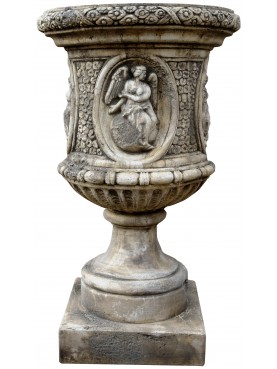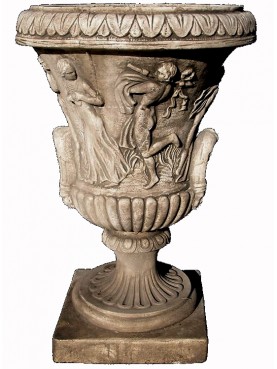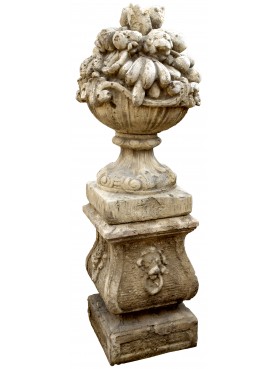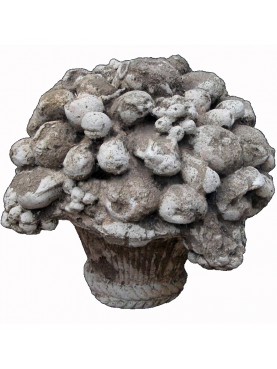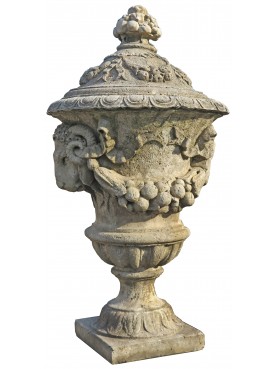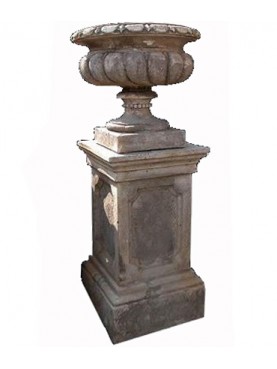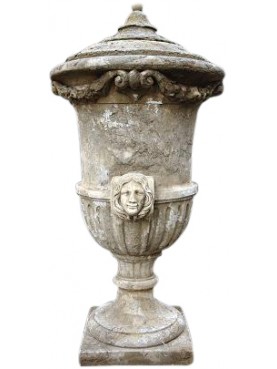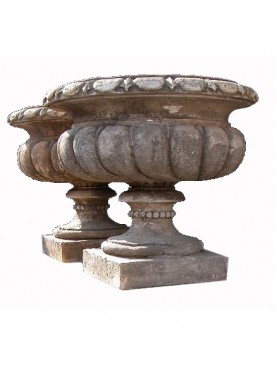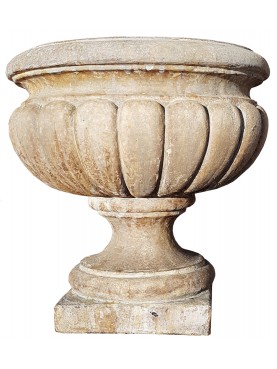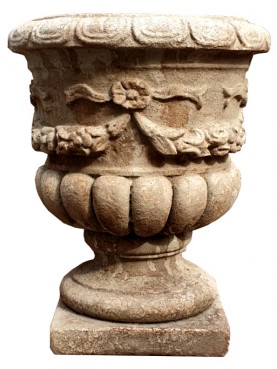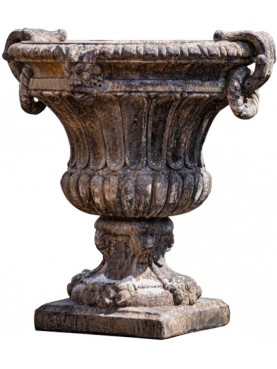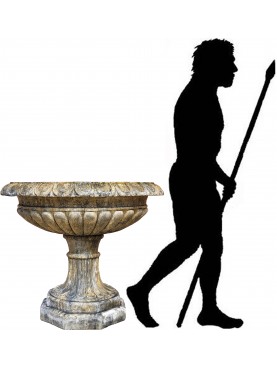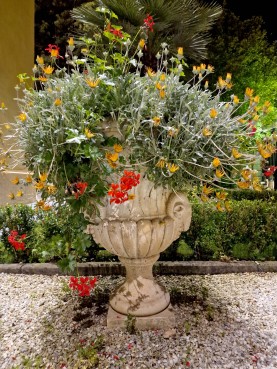Great Neoclassic concrete ornamental Vase H.130cms
Great Neoclassic concrete ornamental Vase H.130cms
13614
New
Cement vase, made in Italy.
Copy of a neoclassical Bourbons vase.
Hand made in two pieces.
In the central body at the top, the Greek classical from the "Greek-Roman" era is highlighted, below surrounded by the classical Greek motif of the wave (See tomb of the diver of Paestum).
Still below, twenty pods crown the whole.
1 Available
Data sheet
| Weight | 110.23 lbs | 50 Kg |
| Height of the vase | 39.37 in | 100 cm |
| Vase base Side X Side | 11.81 in X 11.81 in | 30 X 30 cm |
| Maximum diameter | 23.62 in | 60 cm |
| Manufacturing | Made in Italy | |
| Material | Cemento / Concrete | |
| Upper cap Ø | 19.69 in | 50 cm |
More info
Neoclassicism was a Western cultural movement in the decorative and visual arts, literature, theatre, music, and architecture that drew inspiration from the art and culture of classical antiquity. Neoclassicism was born in Rome largely thanks to the writings of Johann Joachim Winckelmann, at the time of the rediscovery of Pompeii and Herculaneum, but its popularity spread all over Europe as a generation of European art students finished their Grand Tour and returned from Italy to their home countries with newly rediscovered Greco-Roman ideals. The main Neoclassical movement coincided with the 18th-century Age of Enlightenment, and continued into the early 19th century, laterally competing with Romanticism. In architecture, the style continued throughout the 19th, 20th and up to the 21st century.
European Neoclassicism in the visual arts began c. 1760 in opposition to the then-dominant Rococo style. Rococo architecture emphasizes grace, ornamentation and asymmetry; Neoclassical architecture is based on the principles of simplicity and symmetry, which were seen as virtues of the arts of Rome and Ancient Greece, and were more immediately drawn from 16th-century Renaissance Classicism. Each "neo"-classicism selects some models among the range of possible classics that are available to it, and ignores others. The Neoclassical writers and talkers, patrons and collectors, artists and sculptors of 1765–1830 paid homage to an idea of the generation of Phidias, but the sculpture examples they actually embraced were more likely to be Roman copies of Hellenistic sculptures. They ignored both Archaic Greek art and the works of Late Antiquity. The "Rococo" art of ancient Palmyra came as a revelation, through engravings in Wood's The Ruins of Palmyra. Even Greece was all-but-unvisited, a rough backwater of the Ottoman Empire, dangerous to explore, so Neoclassicists' appreciation of Greek architecture was mediated through drawings and engravings, which subtly smoothed and regularized, "corrected" and "restored" the monuments of Greece, not always consciously.
The Empire style, a second phase of Neoclassicism in architecture and the decorative arts, had its cultural centre in Paris in the Napoleonic era.

